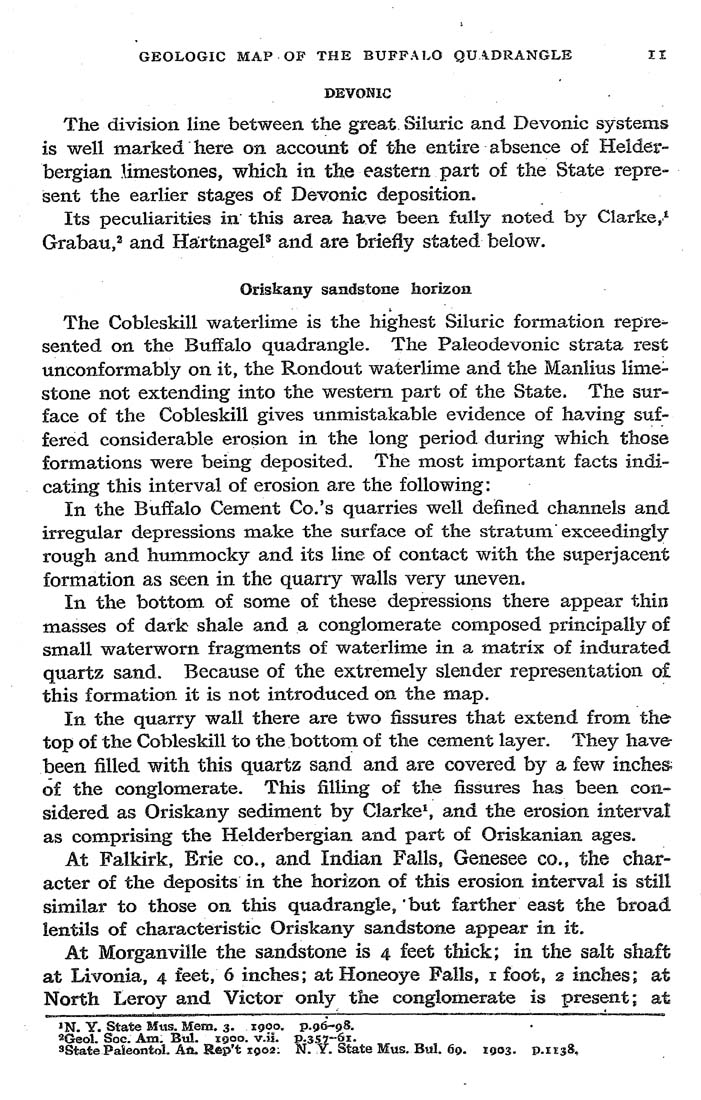GEOLOGIC MAP OF THE BUFFALO QUADRANGLE II
DEVOHIC
The division line between the great Siluric and Devonic systems
is well marked here on account of the entire absence of Helder-
bergian limestones, which in the eastern part of the State repre¬
sent the earlier stages of Devonic deposition.
Its peculiarities in this area have been fully noted by Clarke,^
Grabau,^ and Ha:rtnageP and are briefly stated below.
Oriskany sandstone horizon
The Cobleskill waterlime is the highest Siluric formation repre^
sented on the Buffalo quadrangle. The Paleodevonic strata rest
unconformably on it, the Rondout waterlime and the Manlius lime¬
stone not extending into the western part of the State. The sur¬
face of the Cobleskill gives unmistakable evidence of having suf»
fered considerable erosion in the long period during which those
formations were being deposited. The most important facts indi¬
cating this interval of erosion are the following:
In the Buffalo Cement Co.'s quarries well defined channels and
irregular depressions make the surface of the stratum exceedingly
rough and hummocky and its line of contact with the superjacent
formation as seen in the quarry walls very uneven.
In the bottom of some of these depressions there appear thin
masses of dark shale and a conglomerate composed principally of
small waterwom fragments of waterlime in a matrix of indurated
quarts sand. Because of the extremely slender representation of
this formation it is not introduced on the map.
In the quarry wall there are two fissures that extend from the
top of the Cobleskill to the bottom of the cement layer. They have
been filled with this quartz sand and are covered by a few inches
of the conglomerate. This filling of the fissures has been con»
sidered as Oriskany sediment by Clarke^ and the erosion interval
as comprising the Helderbergian and part of Oriskanian ages.
At Falkirk, Erie co., and Indian Falls, Genesee co., the char¬
acter of the deposits in the horizon of this erosion interval is still
similar to those on this quadrangle, but farther east the broad
lentils of characteristic Oriskany sandstone appear in it.
At Morganville the sandstone is 4 feet thick; in the salt shaft
at Livonia, 4 feet, 6 inches; at Honeoye Falls, i foot, 2 inches; at
North Leroy and Victor only the conglomerate is present; at
*N. Y. State Mits. Mem. 3. igoo, p.96-98.
^Geol. Soc. Am. Bui. ipoo. v.il. p.3S!7-6i.
aState PaleontoL A^ R@p't £0O2: N. Y. State Mus. Bill. 6q. 1903. P.iES^*
|








